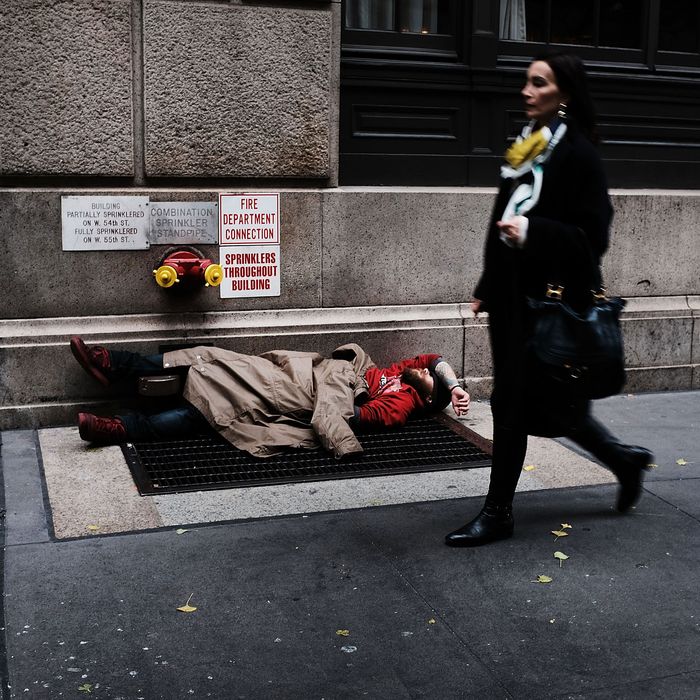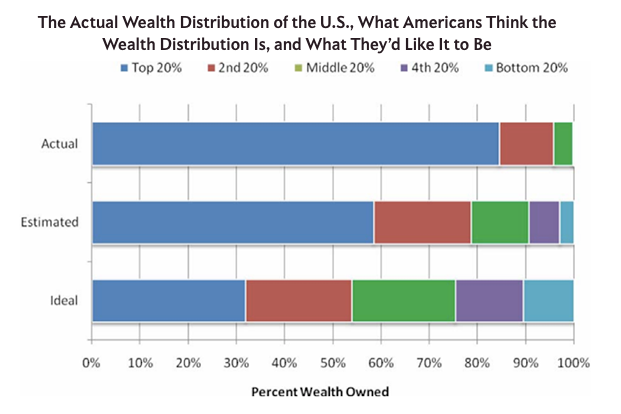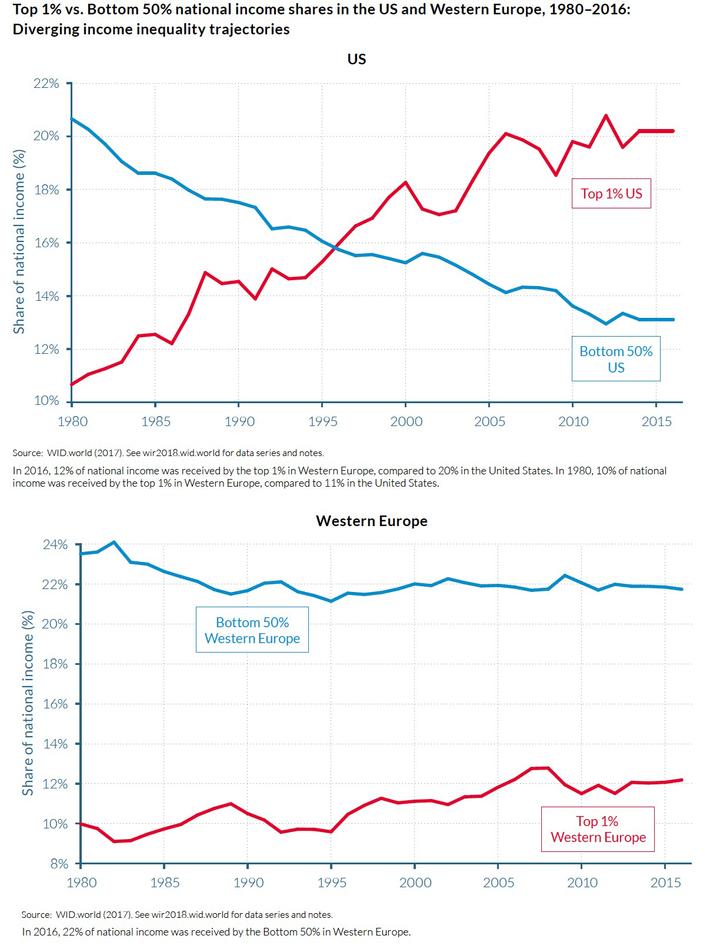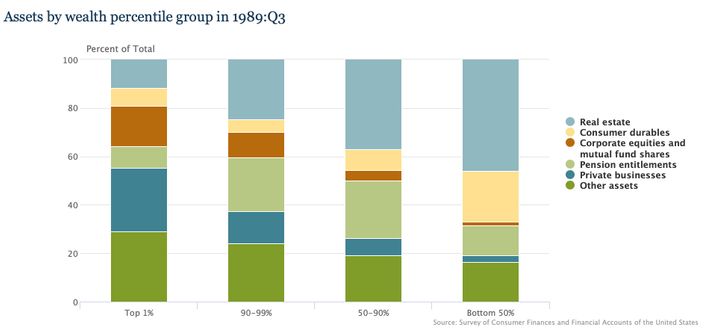
On June 16, 2019, Eric Levitz writes on The Intelligencer:
Some Democratic presidential candidates say that America’s economic system is badly broken and in need of sweeping, structural change. Others say that the existing order is fundamentally sound, even if it could use a few modest renovations. The former are widely portrayed as ideologues or extremists, the latter as moderates.
And it’s certainly true that Bernie Sanders and Elizabeth Warren are ideologically “extreme,” if our baseline is the median member of Congress or the median policy agenda pursued by recent American presidents. But it’s not clear why these would be the appropriate metrics.
After all, we do not equate calls for sweeping change (whether from recent precedent or from current consensus) with extremism in all circumstances. When young people in an Islamist autocracy take to the streets demanding basic civil rights, we do not regard them as radicals, or the regime’s apologists as moderates. Our assessment of the dissenters’ ideological character does not hinge on how far their values depart from those of the status quo order — but rather on how far that status quo departs from ourconsensus values.
Thus, whether it is truly extreme or moderate to demand sweeping changes to American capitalism depends on the degree to which the existing system aligns with common-sense views of what a just or rational economic system should look like.
Happily, the Federal Reserve just released some data that makes the state of this alignment easier to gauge. In its new Distributive Financial Accountsdata series, the central bank offers a granular picture of how American capitalism has been distributing the gains of economic growth over the past three decades. Matt Bruenig of the People’s Policy Project took the Fed’s data and calculated how much the respective net worth of America’s top one percent and its bottom 50 percent has changed since 1989.
He found that America’s superrich have grown about $21 trillion richer since Taylor Swift was born, while those in the bottom half of the wealth distribution have grown $900 billion poorer.

Notably, this measure of wealth includes liabilities, such as student debt. And it does not include consumer goods, such as computers or refrigerators, as economists do not conventionally view such products as wealth assets. But if one did include the Fed’s data on the distribution of consumer goods, the wealth gap between the top one percent and bottom 50 would actually be even larger.
So, is an economic system that distributes its benefits in this manner consistent with Americans’ common-sense views of economic justice? If not, would incremental changes be sufficient to bring it into alignment with the median American’s values? Or would more sweeping measures be required?
Put differently: Does the average American believe that, over the past three decades, our nation’s richest one percent have contributed roughly $22 trillion more to our collective well-being than the poorest 50 percent have? Does she think that the tens of millions of working-class people who spent the past 30 years cooking other Americans’ dinner, cleaning their toilets, caring for their children, harvesting their crops, ringing up their groceries — and performing the countless other poorly remunerated forms of labor that our society demands — collectively produced an infinitesimal fraction of the value that America’s corporate lawyers, hedge-fund managers, venture capitalists, specialist physicians, heirs and heiresses, and other high-paid professionals did?
Survey data (and common sense) says otherwise. In 2011, Michael Norton of Harvard Business School and Dan Ariely of Duke University published a study on Americans’ views of how wealth was distributed in their society, and how they felt it should be distributed. They found that, in the average American’s ideal world, the richest 20 percent would own 32 percent of national wealth. In reality, the top quintile owned 84 percent as of 2011. And that share has grown in the intervening years. Today, the one percent alone commands roughly 40 percent of all America’s wealth.

Given all this, any politician who insists that American capitalism is “already great” is clearly a far-right extremist whose indifference to inequality puts him or her wildly out of step with ordinary people. But is it the case that Warren and Sanders would take things too far in the other direction?
Not remotely. I do not have the relevant data or skills to project precisely how the full implementation of either candidate’s agenda would influence America’s wealth distribution. But neither candidate is calling for a series of reforms that would place the United States far outside the Western European norm. In fact, both Warren and Sanders have cribbed their signature policies from European nations. As the 2018 World Inequality Report demonstrated, policy choices do matter — and income inequality is much lower in Western Europe than it is in the U.S.

But even Scandinavia’s social democracies feature far more inequitable distributions of wealth than Americans think to be fair, according to Ariely and Norton’s survey. What’s more, it will take a lot of redistribution just to prevent America’s current wealth gap from growing even larger. The fundamental challenge in combating inequality is that wealth begets more wealth. Those who can afford to invest in bonds get to collect annual interest payments; those who invest in stocks or real estate typically see their capital assets annually appreciate. Thus, most years, our nation’s collective capital stock directs loads of passive income to America’s wealthiest citizens. As Vox’s Matt Yglesias observes, much of the explosion in wealth inequality that the Fed documents can be attributed to the fact that the one percent began 1989 owning a wildly disproportionate share of corporate equities and private businesses. The passive income generated by these assets would have allowed the one percent to pull away from everyone else, even in the absence of soaring wage inequality.

Nothing short of progressively redistributing ownership of capital assets could bring our nation’s wealth distribution into alignment with its values. For the moment, neither Warren nor Sanders has released a detailed plan for doing that on a large scale. Their current platforms would be less likely to significantly reduce wealth inequality than to merely slow its growth.
Perhaps “we should adopt redistributive policies and institutions that are common throughout Western Europe, so as to prevent the one percent’s share of national wealth from rising too far above 40 percent” sounds like an extreme proposition to you. But the alternative — or at least the alternative’s implications for wealth inequality — would strike the average American as far more radical.
http://nymag.com/intelligencer/2019/06/the-fed-just-released-a-damning-indictment-of-capitalism.html

